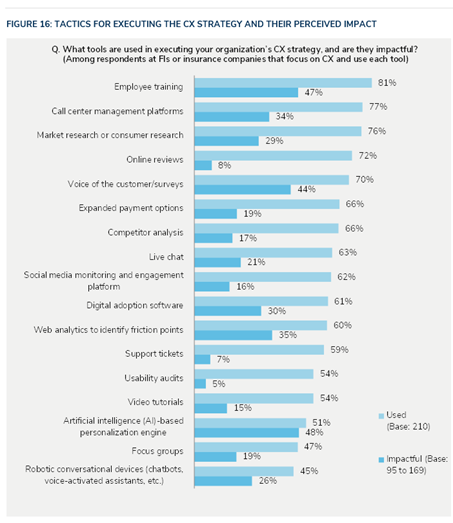 Recently, NBC News reported a story of wide employee discontentment at Starbucks due to customer satisfaction scores and the effects these scores have on workplace evaluations. Managers are using customer survey results to penalize employees, and the practice is meeting resistance.
Recently, NBC News reported a story of wide employee discontentment at Starbucks due to customer satisfaction scores and the effects these scores have on workplace evaluations. Managers are using customer survey results to penalize employees, and the practice is meeting resistance.
These survey results, the so-called “connection scores,” are collected from Starbucks patrons and report on overall store experience, cleanliness, product satisfaction, and, most pertinently, whether “the employees made an effort to get to know me.” It seems that in some cases, employee hours were reduced because of low scores.
This story shows what can happen when customer experience (CX) teams rely too heavily on one channel or tool for measuring and improving CX. Instead, financial institutions and insurers should deploy a variety of tactics, tools, and approaches to understand and improve their CX. Our newly published report, Executing a CX Strategy: Insights from the Aite-Novarica Group 2022 CX Survey, lists 17 tactics for executing a CX improvement strategy.
The table below shows the many kinds of tools and tactics being used to improve CX.

The position of Voice of Customer/Surveys in this table is revealing. It is neither the most widely deployed tactic (employee training is), nor considered to be the most impactful if it’s deployed (AI-based personalization is).
There are several reasons Voice of Customer (VOC) has to be balanced out by other tactics and tools when it comes to measuring and understanding CX.
- What people do isn’t always what people say. As Seth Stephens-Davidowitz notes in the title of his bestselling book, Everybody Lies, consumer survey data can be unreliable. It should be balanced by quantitative metrics derived from usage, behavior, or business performance. Any online experience can be tracked through digital analytics tools, and even physical-world experiences can be measured through geofencing and video monitoring techniques. It would be interesting, for example, to see whether low “connection scores” at Starbucks actually correlated to real conversation volume.
- Surveys can reflect social biases. NBC makes this point in the article, but it is worth reiterating here. When customers are asked to score or rate their satisfaction with employees, there is a real risk that these scores can be affected by conscious or unconscious biases held by those customers. This is particularly true in person-to-person service industries; in the case of financial services and insurance carriers, it is germane to how we measure and understand experiences in bank branches, call centers, and wealth management offices. When collecting this kind of VOC, it is important to collect demographic data about the respondent so some of these patterns can be analyzed and controlled for.
- Employees should be empowered. One of the issues with customer surveys cited by the NBC article is that Starbucks employees felt voiceless and helpless, at the mercy of anonymous customers they may not even recall interacting with. By contrast, the most popular tactic for executing a CX strategy in our report was employee training, cited by 81% of respondents. Employees want to provide good experiences to customers, and they are looking to be empowered to do so. CX data should be collected in a 360-degree manner, incorporating the feedback not just of customers, but of the employees with whom they interact.
I can be reasonably sure that Starbucks doesn’t just rely on surveys when making decisions about store hours or staffing levels. But the lesson here for any organization, including financial institutions and insurers, is that it’s vital to deploy a variety of tactics to understand and improve CX, with full transparency toward employees. Using multiple CX tactics rather than leaning heavily on just one will help paint a balanced and comprehensive picture of how customers are engaging with the brand.
To learn more about how to effectively launch or update a CX strategy, read our full report, Executing a CX Strategy: Insights from the Aite-Novarica Group 2022 CX Survey, or reach out to me directly at [email protected].